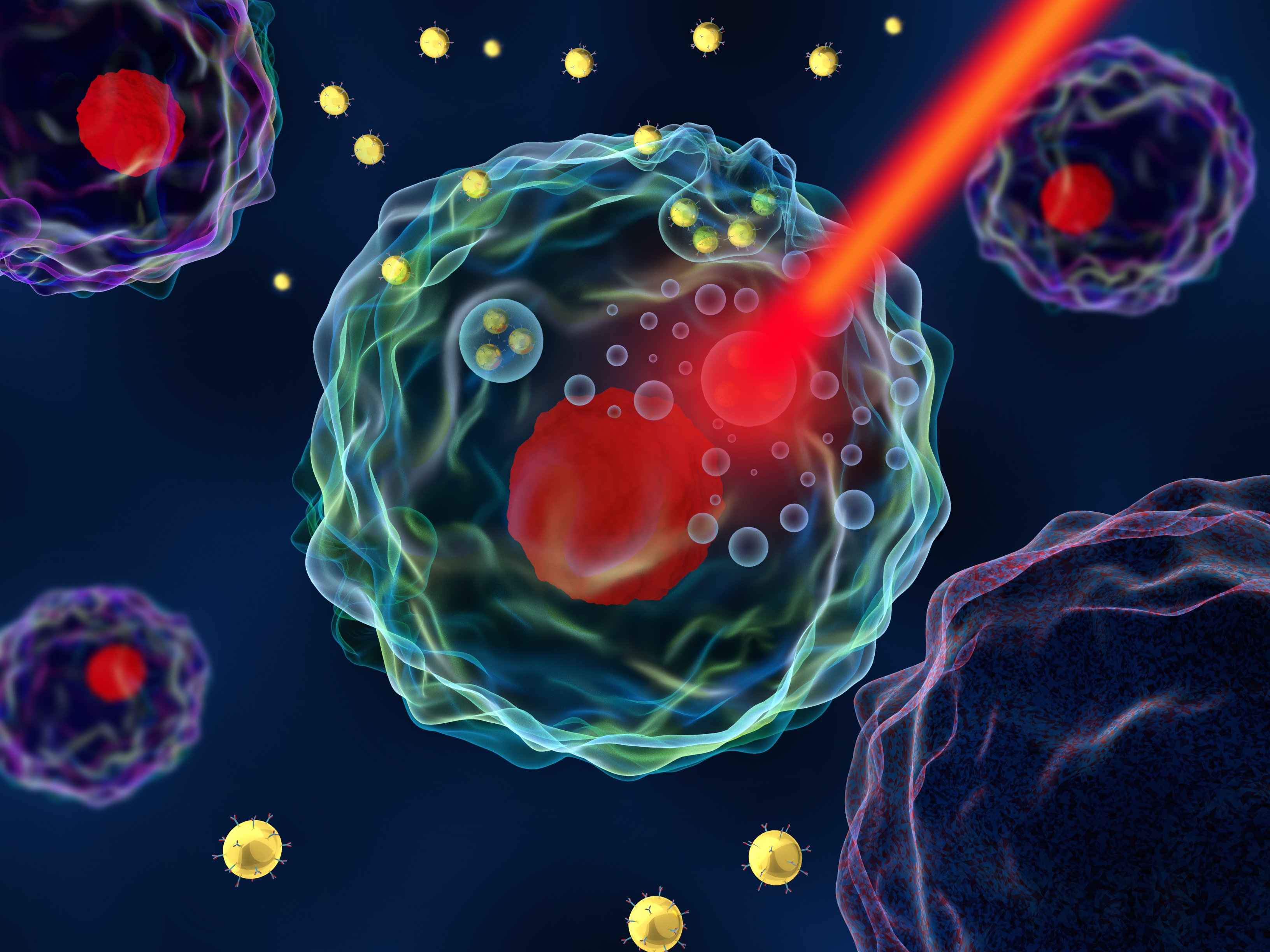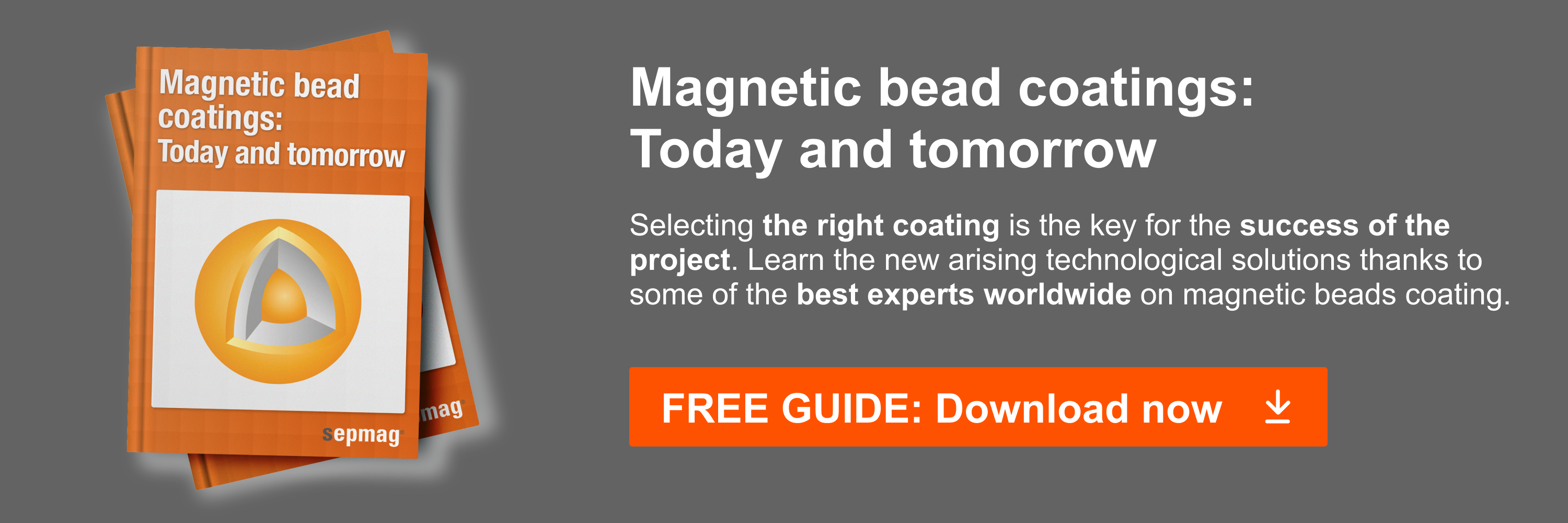Gold nanoparticles display unique optical properties. These properties make gold nanoparticles useful tools for biotechnology and medicine. Gold nanoparticles are also called nano gold or colloidal gold due to the fact that they are less than 100nm in size and are suspended in a liquid solution. The color of the colloidal gold is dependent upon the size and shape of the gold nanoparticles comprising it. Larger particles and aggregates of particles cause the absorbance spectrum to broaden and shift towards longer wavelengths and a red color. The metallic nature of the particles makes them very useful for imaging by electron microscopy, which was one of the first applications for them. The gold nanoparticles can be functionalized with antibodies, carbohydrates, and nucleic acids. This makes them very useful for scanning electron microscopy (SEM), transmission electron microscopy (TEM), and confocal light microscopy as well as pathogen detection and other diagnostic assays. The ability of gold to absorb light via surface plasmon resonance (SPR) makes them useful tools for photothermal therapy in the treatment of cancer.
Gold nanoparticles applications fall into two main categories
The easiest way to divide gold nanoparticles applications is into diagnostic uses and therapeutic uses:
Diagnostic applications:
- visualization and bioimaging
- TEM, SEM, fluorescence microscopy, dark field microscopy
- immunoassay
- sol particle immunoassay
- nucleic acid detection
- biosensors
Therapeutic applications:
- photothermal therapy
- drug carriers
This is not by any means a comprehensive list of gold nanoparticles applications. There are certainly other creative uses, and new applications are always being researched and developed.
Diagnostic gold nanoparticles applications
Gold nanoparticles are useful for imaging tumors. Tumors have increased vascularization and an enhanced permeability effect which causes small nanoparticles to collect in the tumor. Gold nanoparticles can also be used to track cellular uptake. The nanoparticles can be functionalized to allow entry into a target cell.
Immunoassays rely on antibody-functionalized gold nanoparticles. The sol particle immunoassay uses functionalized gold nanoparticles. When the functionalized particles are in the presence of a target molecule at the optimal concentrations many particles will bind to the target molecules at the same time. This multiple binding causes the particles to clump together around target molecules. The absorbance spectrum for individual gold nanoparticles is different than the absorbance spectrum for clumped gold nanoparticles. The aggregated nanoparticles shift red and have a broader absorbance. Therefore it is easy to detect the presence of a target molecule by observing that optical shift. This idea can also be used to detect nucleic acids by functionalizing the nanoparticles with single stranded DNA.
The gold nanoparticles are useful as biosensors due tosurface plasmon resonance. Surface plasmon resonance is a phenomenon whereby a specific wavelength of light is absorbed and propagated along the metal. The wavelength that is absorbed, is directly related to the dielectric constant of the material. When proteins and molecules bind to the surface of functionalized gold nanoparticles the absorbed wavelength of light due to surface plasmon resonance changes. This makes a very sensitive biosensor.
Therapeutic gold nanoparticles applications
The ability of nanoparticles to absorb light by SPR makes them a useful tool for tumor ablation by photothermal therapy. When light of the absorption wavelength is directed for a long time onto the gold nanoparticles they absorb it and heat up. This excess heat radiates away from the nanoparticles and has enough energy to damage the tumor cells. The gold nanoparticles naturally collect in tumors due to the enhanced permeability effect so the hyperthermia therapy is localized to tumors. If the passive enhanced permeability strategy for tumor localization is not enough then the gold nanoparticles can be functionalized with antibodies or proteins that will target tumor surface markers.
There are many different shapes of gold nanoparticles. Nanocages are particularly useful for drug delivery applications. Alternatively, the drugs can be conjugated to the surfaces of the gold nanoparticles.
The conjugation of drug molecules to the surfaces of the nanoparticles can be covalent or noncovalent. Most covalent attachment chemistries employ thiol linkers to the end of the drug molecule to react with the gold surface. Noncovalent linkages are accomplished with polymer shells that can trap drug molecules within a crosslinked net.
It can be beneficial to conjugate a drug to a gold nanoparticle because the large conjugate is often taken into the cell via endocytosis, which results in a greater amount of drug gaining access to the inside of the cell. Some attachment chemistries are designed to break apart when the pH drops as the endosome matures. This improves the release of drug into the cell. This strategy also works well for drugs trapped within a polymer network on the surface of the gold nanoparticle; the drugs are released as the crosslinked polymer degrades. Other materials besides drugs may be conjugated to the nanoparticle for therapeutic purposes. Common examples are silencing RNA (siRNA), proteins, and even vaccines.
Related news
- Molecularly imprinted polymers
- Properties of nano gold
- Pathogen detection using magnetic nanoparticles or molecularly imprinted polymers





